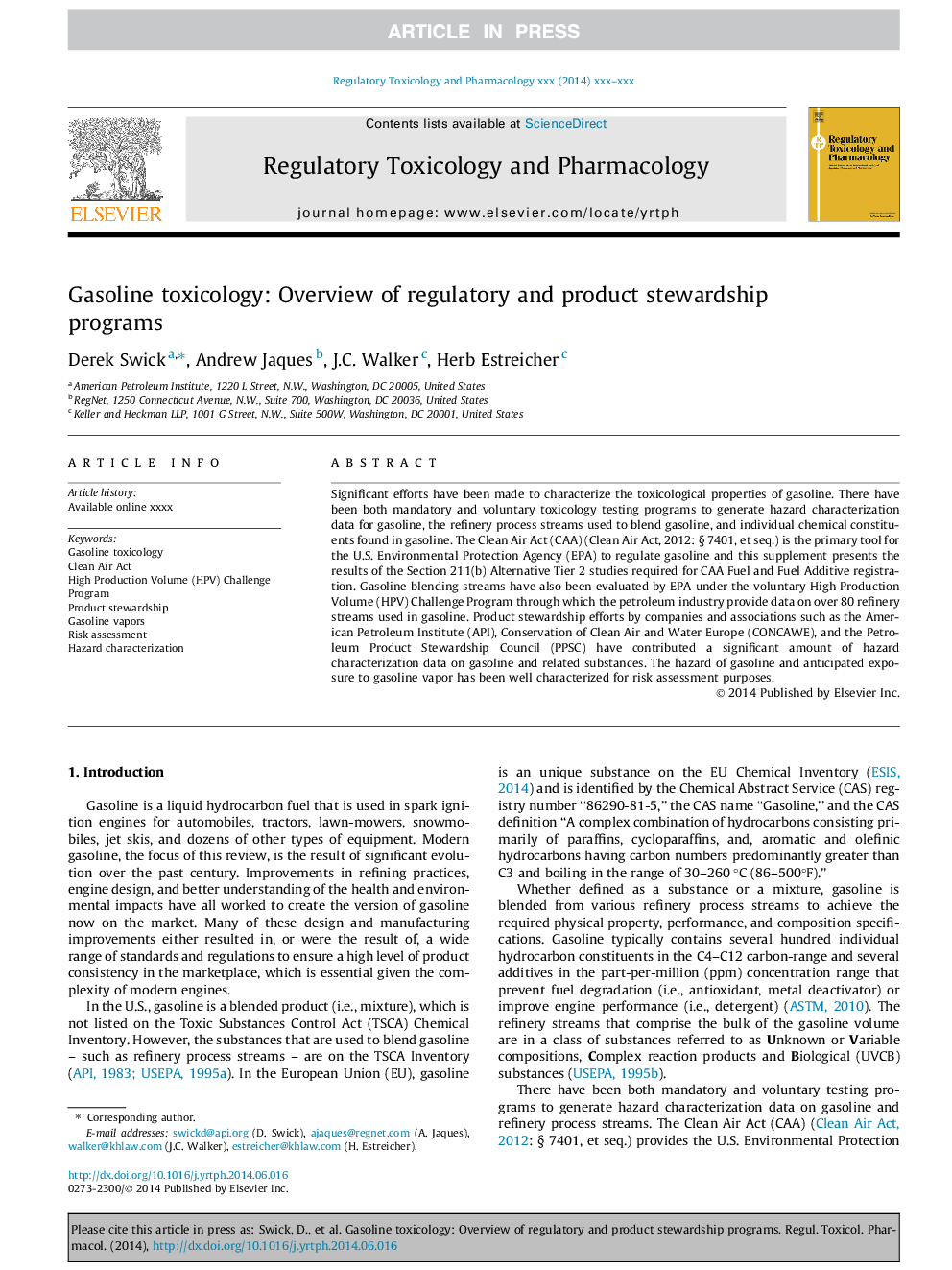| کد مقاله | کد نشریه | سال انتشار | مقاله انگلیسی | نسخه تمام متن |
|---|---|---|---|---|
| 5856984 | 1131988 | 2014 | 10 صفحه PDF | دانلود رایگان |
عنوان انگلیسی مقاله ISI
Gasoline toxicology: Overview of regulatory and product stewardship programs
ترجمه فارسی عنوان
سم شناسی بنزین: بررسی اجمالی برنامه های نظارتی و نظارتی محصول
دانلود مقاله + سفارش ترجمه
دانلود مقاله ISI انگلیسی
رایگان برای ایرانیان
کلمات کلیدی
موضوعات مرتبط
علوم زیستی و بیوفناوری
علوم محیط زیست
بهداشت، سم شناسی و جهش زایی
چکیده انگلیسی
Significant efforts have been made to characterize the toxicological properties of gasoline. There have been both mandatory and voluntary toxicology testing programs to generate hazard characterization data for gasoline, the refinery process streams used to blend gasoline, and individual chemical constituents found in gasoline. The Clean Air Act (CAA) (Clean Air Act, 2012: § 7401, et seq.) is the primary tool for the U.S. Environmental Protection Agency (EPA) to regulate gasoline and this supplement presents the results of the Section 211(b) Alternative Tier 2 studies required for CAA Fuel and Fuel Additive registration. Gasoline blending streams have also been evaluated by EPA under the voluntary High Production Volume (HPV) Challenge Program through which the petroleum industry provide data on over 80 refinery streams used in gasoline. Product stewardship efforts by companies and associations such as the American Petroleum Institute (API), Conservation of Clean Air and Water Europe (CONCAWE), and the Petroleum Product Stewardship Council (PPSC) have contributed a significant amount of hazard characterization data on gasoline and related substances. The hazard of gasoline and anticipated exposure to gasoline vapor has been well characterized for risk assessment purposes.
ناشر
Database: Elsevier - ScienceDirect (ساینس دایرکت)
Journal: Regulatory Toxicology and Pharmacology - Volume 70, Issue 2, Supplement, 1 November 2014, Pages S3-S12
Journal: Regulatory Toxicology and Pharmacology - Volume 70, Issue 2, Supplement, 1 November 2014, Pages S3-S12
نویسندگان
Derek Swick, Andrew Jaques, J.C. Walker, Herb Estreicher,
